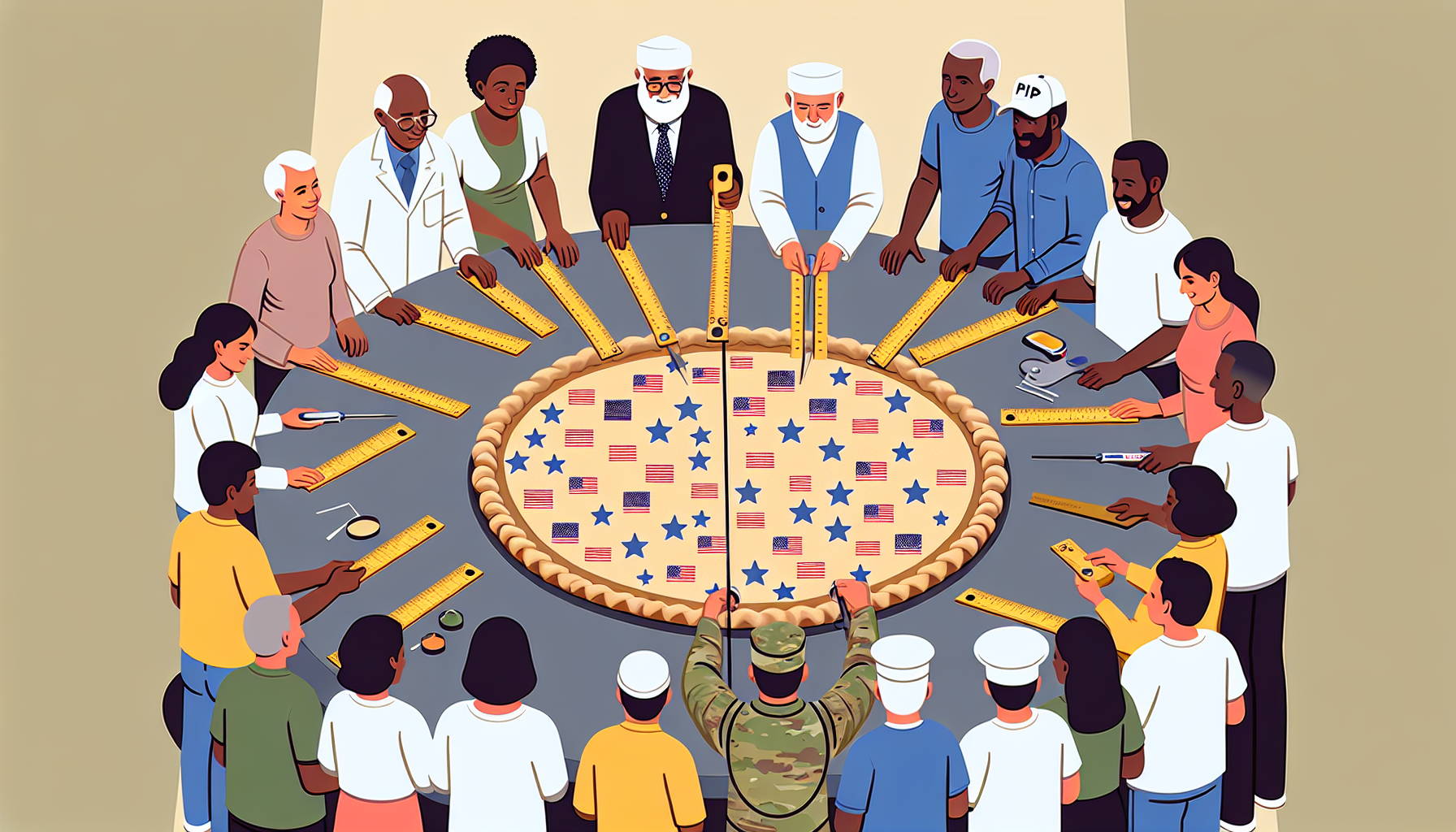Definition
Apportionment, in military operations, refers to the distribution of limited resources, such as forces, supplies, or equipment, among different units, geographical areas, or missions. It is typically determined by higher authorities in response to specific mission requirements and strategic priorities. This process ensures that resources are allocated efficiently, enabling successful execution of various operations.
Key Takeaways
- Apportionment is the distribution of available military forces and resources to different regions or assignments, based on strategic priorities and objectives.
- It is a crucial step in the military decision-making process, ensuring that specific missions or tasks are adequately supported to achieve their goals while considering other ongoing operations and commitments.
- The process involves a continuous assessment of the current and future threat environment, as well as the availability of resources, to make informed decisions that balance risk and achieve mission success.
Importance
Apportionment is an essential term in military operations because it refers to the distribution of limited resources, such as personnel, equipment, and supplies, among various commands and units within the armed forces.
This process ensures that vital resources are effectively allocated, prioritized, and utilized to achieve strategic objectives during missions and operations.
By efficiently managing the distribution of resources, the military can maintain a higher level of readiness, respond quickly and effectively to various threats and crises, and create a significant impact with the desired outcome.
Apportionment is a critical component of military planning and execution, as it helps commanders maximize their available assets while conserving critical resources for future engagements.
Explanation
Apportionment, in the context of military operations, serves a crucial purpose in optimizing the efficient and effective utilization of available resources. It is a crucial planning tool that aids in the equitable distribution of limited military assets, whether it be manpower, equipment, or specific capabilities, among various tasks and missions.
By allocating the resources in a well-structured manner, apportionment ensures that diverse missions and military objectives are accomplished without depleting the assets at the disposal of decision-makers. As such, the strategic application of apportionment promotes an agile and resilient force capable of responding to changing circumstances while accomplishing complex objectives.
In practice, military leaders are responsible for evaluating needs and risks associated with evolving situations on the battlefield or in conflict zones. This requires clear communication and coordination between units, as well as a thorough understanding of each unit’s capabilities and limitations.
Apportionment plays a critical role in balancing competing demands, allowing commanders at all levels to prioritize and order missions in a manner that best supports the overall strategic goal. By ensuring that no single mission or unit consumes excessive resources at the expense of others, apportionment enhances the military’s ability to adapt to ever-changing geopolitical scenarios and conduct multiple operations simultaneously, ultimately contributing to mission success and a more stable security environment.
Examples of Apportionment
Apportionment, in the context of military operations, refers to the distribution of forces, military resources, or tasks in response to strategic requirements or plans. Here are three real-world examples that demonstrate the concept of apportionment in military operations:
Operation Desert Storm (1991):During the Gulf War, the United States and its allies established a coalition to liberate Kuwait from Iraqi occupation. The apportionment of military resources was critical in the planning and execution of this operation. Each participating country contributed a specific number of troops, aircraft, and logistical support resources, in accordance with their capabilities and commitments. The coordination of these assets ultimately led to the successful liberation of Kuwait.
NATO Response Force (NRF):The North Atlantic Treaty Organization (NATO) maintains a multinational force known as the NATO Response Force, designed for rapid deployment in response to emerging security challenges. Apportionment plays an essential role in the organization and functioning of this force, as each member nation contributes a predetermined number of military assets and personnel based on their capabilities, strategic considerations, and commitments to NATO obligations. The structure of NRF ensures a balanced distribution of forces, allowing for effective collaboration on joint military operations.
United Nations Peacekeeping Operations:United Nations (UN) peacekeeping operations often require a substantial apportionment of military resources from various member states. When the UN establishes a peacekeeping mission, it works closely with member countries to determine the number of personnel, equipment, and logistical support needed for the mission. Countries voluntarily contribute these resources, which are then combined and organized by the UN to carry out the operation. A notable example is the UN Mission in Liberia, where several countries supplied troops, police officers, and military equipment to help stabilize the country after a civil war.
“`
FAQs about Apportionment in Military Operations
What is apportionment in military operations?
Apportionment in military operations refers to the allocation of resources, such as personnel, equipment, and finances, to various military units or efforts. This process ensures that resources are distributed based on the priorities and objectives of the mission.
Why is apportionment important in military operations?
Apportionment is essential in military operations as it enables the efficient and effective use of resources to accomplish the mission. By allocating resources to different units or efforts, commanders can prioritize their objectives, make informed decisions, and achieve better outcomes in military operations.
How is apportionment determined in military operations?
Apportionment in military operations is determined based on various factors, such as mission priorities, operational needs, and resource availability. Military commanders and planners assess the needs of the mission, evaluate the capabilities and resources on hand, and allocate them according to the priorities and objectives of the operation.
Who is responsible for apportionment in military operations?
The responsibility for apportionment in military operations lies with the military commanders at different levels. Higher echelon commanders apportion resources among subordinate units based on strategic priorities and needs, while subordinate commanders allocate resources to specific tasks or efforts within their area of responsibility.
Can apportionment change during military operations?
Yes, apportionment can change during military operations due to various reasons, such as a shift in mission priorities, an unexpected change in operational needs, or a surge in resource availability. Military commanders must continuously review and adjust apportionment as needed to adapt to changing circumstances and ensure mission success.
“`
Simply copy the content between the `` tags and paste it into your existing HTML page where you want the FAQ section to appear.
Related Military Operation Terms
- Dependency and Indemnity Compensation (DIC)
- Survivors Pension
- Education and Training Benefits
- Vocational Rehabilitation and Employment (VR&E)
- Beneficiary Travel
Sources for More Information
- GlobalSecurity.org
- Joint Chiefs of Staff Doctrine Library
- Federation of American Scientists
- U.S. Army Center for Army Lessons Learned
 Benefits.com Advisors
Benefits.com Advisors
With expertise spanning local, state, and federal benefit programs, our team is dedicated to guiding individuals towards the perfect program tailored to their unique circumstances.
Rise to the top with Peak Benefits!
Join our Peak Benefits Newsletter for the latest news, resources, and offers on all things government benefits.




















